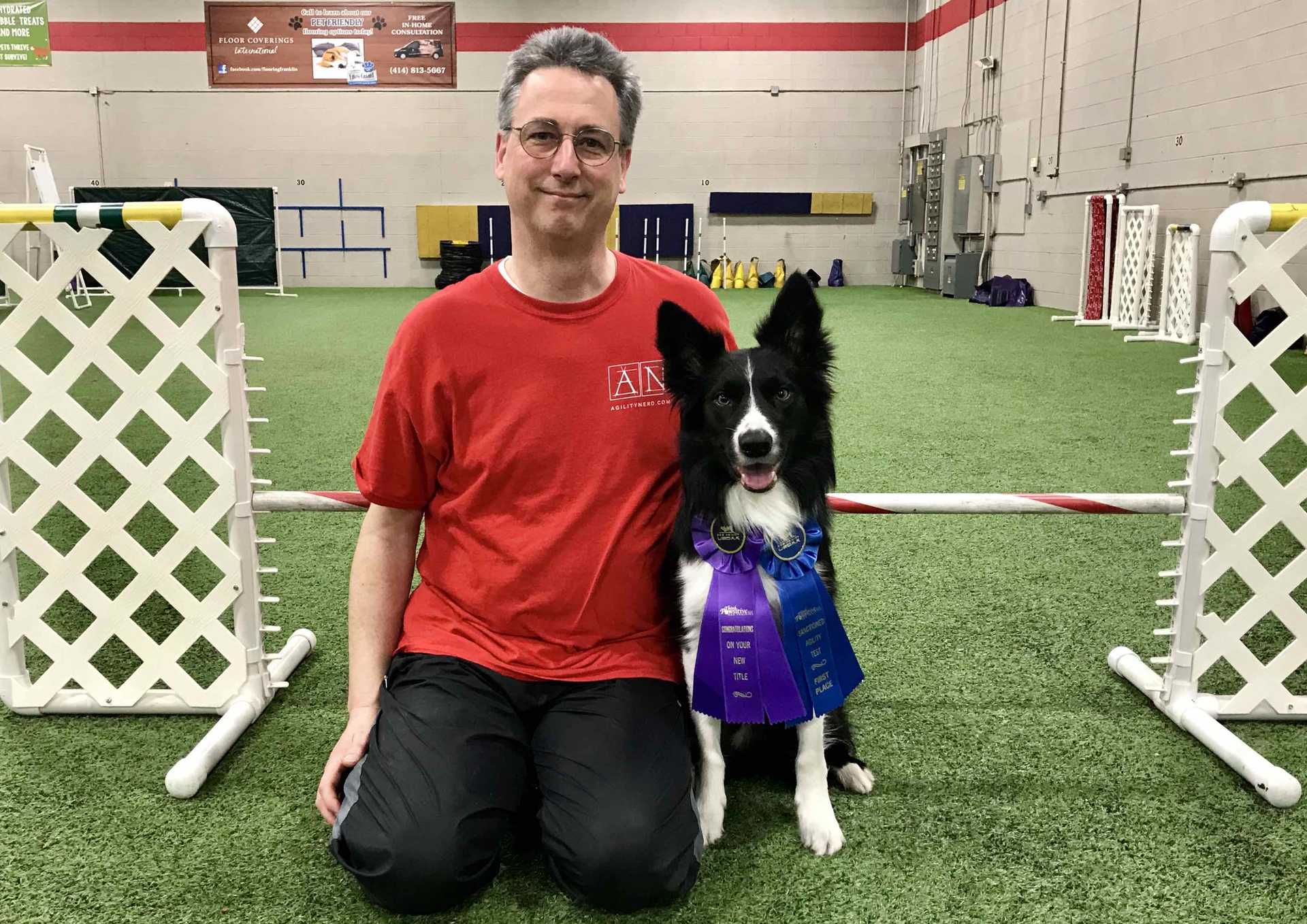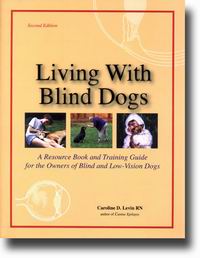Living With Blind Dogs
31 Dec 2004
Now that we are coming to grips with Mr. Peabody’s eventual blindness we’ve started thinking about what training we can do while he is still sighted to help him later on.
We are hoping that that, due to being born with poor vision, Mr. Peabody will adapt better to being totally blind. When his glaucoma caused his left eye to go blind he showed no change in personality and only expected behavior changes. Those changes included having to search for toys landing to his blind side. Of course on the Agility course it was a bigger change. You could see him adjust his stride approaching jumps, by stutter stepping, as he judged when to take off. To me this was just miraculous. How do you accurately judge distance without binocular vision? But he had enough life experience to succeed.
But we aren’t kidding ourselves that this won’t be a big change for an active dog. Although he is ten and a half years old he is in excellent health and is full of energy. Not only do we need to train him to be safe in and around the house we also need to devise games that will keep him mentally engaged and happy.
The definitive text for blind and low-vision dogs is Caroline D. Levin RN’s Living With Blind Dogs. It covers a wide cross section of material and makes a good reference book. The book contains these chapters:
- Dealing With Loss
- Anatomy of the Eye
- Diseases That Cause Blindness
- Genetics and Blindness
- How Dogs React to Blindness
- Pack Issues and Behavioral Changes
- Training Concepts
- New Skills for Blind Dogs
- Negotiating the House
- Negotiating the Yard
- Negotiating the Community
- Playtime
- White Canes and Other Devices
- Dogs Both Blind and Deaf
- Dogs Blind From Birth
- Vision and the Modern-Day Dog
I found this book very helpful. It is well organized and doesn’t assume the reader has any other dog training experience. Caroline does an excellent job covering such a broad topic. There were some sections where I felt I already had an understanding of the issues. But many other sections gave me a much better insight into the issues we will face. I was especially interested in the training, negotiating, and devices chapters. These sections had a lot of good practical information, diagrams, and photos.
Based on what we’ve read we’ve begun removing clutter and clearing unnecessary obstacles from the traffic lanes of the house. Next we’ll start scent marking important areas of the house and start working on training commands for stepping up and down the stairs. We’ll also need to work on a hoop collar (to protect his head when walking/playing outside) and a “cane-leash” (a solid leash to better control his motions in tight non-home/outside areas). We want to start getting him used to these new aids while he can still see.
One issue the book pointed out was that blind dogs won’t have as much of a blink response (they don’t see obstacles coming at their eyes and don’t blink to protect their eyes). So they are more likely to get foreign objects poked into their eyes, possibly damaging them. So we are also thinking about trying some Doggles to protect Mr. P’s eyes when he is outside. They’ll be especially helpful if we find Mr. P has an interest in Tracking (yep another new dog sport to learn about!).
Reading this book showed us that there is a lot we can do to help Mr. Peabody adjust. We now have some tools with which to face the new challenges ahead of us.
If you enjoyed this article won't you please:  Thanks!
Thanks!

